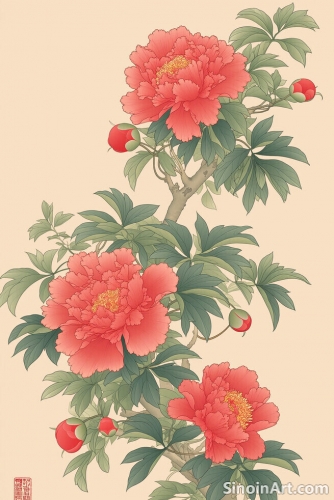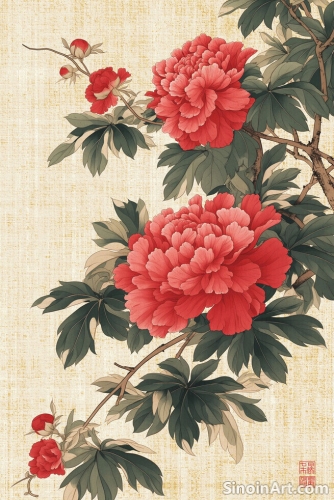Commissioning a Gongbi Painting: What You Need to Know
|
Commissioning a Gongbi painting can be a rewarding experience, allowing you to acquire a unique piece of art that is tailored to your specific preferences. However, it is essential to understand the process and what to expect before commissioning a piece. Clear communication, an understanding of the artist’s style, and a well-defined project brief are essential elements in a successful commission.  Before approaching an artist, it’s crucial to have a clear idea of what you want in the painting. Consider the subject matter, the size, the color palette, and any specific details you want to include. This is essential to communicate to the artist what is expected from the project. A clear concept of what you want can prevent many problems in the future.  When selecting an artist, it's essential to research their portfolio and find an artist whose style aligns with your preferences. Look at examples of their past work to ensure their technical skill and artistic vision match your expectations. Select an artist who creates the kind of work you wish to acquire.  The process of commissioning a Gongbi painting often begins with a discussion between the artist and the client. This meeting is important to clarify the scope of the project, set expectations, and discuss the timeline and budget. This is an important step to ensure the piece will meet your needs. The timeline for completing a Gongbi painting can vary widely depending on the complexity and size of the artwork. It is important to be patient and allow the artist sufficient time to complete the painting to the best of their abilities. These works take considerable time and patience. Finally, it is important to discuss the budget and payment schedule with the artist before starting the project. Be clear about your financial expectations and come to a clear agreement before any work begins. A contract with a payment schedule should be an expected step for a commission. Commissioning a Gongbi painting is a collaborative process that requires open communication and mutual respect. A clear understanding of expectations and requirements is an essential element in creating a unique and cherished piece of art. A well-defined commission will ensure both artist and client are happy with the result. |
Tag : Commission Gongbi, custom art, Chinese painting commission, art client guide, working with artists
Related information
- Techniques and Tools: Unveiling the Secrets of Gongbi
- Gongbi Painting and Its Cultural Significance in China
- The Materials of Gongbi: A Palette of Tradition
- Gongbi and the Court: Patronage and Artistic Standards in Imperial China
- Gongbi and the Depiction of Everyday Life
An in-depth look at the techniques and tools used in Gongbi painting, covering brushes, ink, pigments, and painting surfaces.
This article explores the cultural significance of Gongbi painting in China, highlighting its historical importance, its role in reflecting cultural values, its connection to nature, its emphasis on discipline, and its continued relevance in modern Chinese society.
This article explores the essential materials used in Gongbi painting, focusing on the unique characteristics of brushes, silk, xuan paper, mineral pigments, and other tools.
The history of Gongbi painting is intrinsically linked to the imperial courts of China, where it flourished under the patronage of emperors and the elite classes. The demand for highly detailed and realistic depictions of the natural world and court life led to the development of the meticulous techniques and refined aesthetic characteristic of the Gongbi tradition. This patronage significantly shaped the evolution and preservation of this distinctive style.
This article explores the use of Gongbi painting in depicting scenes from everyday life, highlighting its meticulous detail, portrayal of common activities, and how these works serve as visual records of daily existence and a particular time and place.